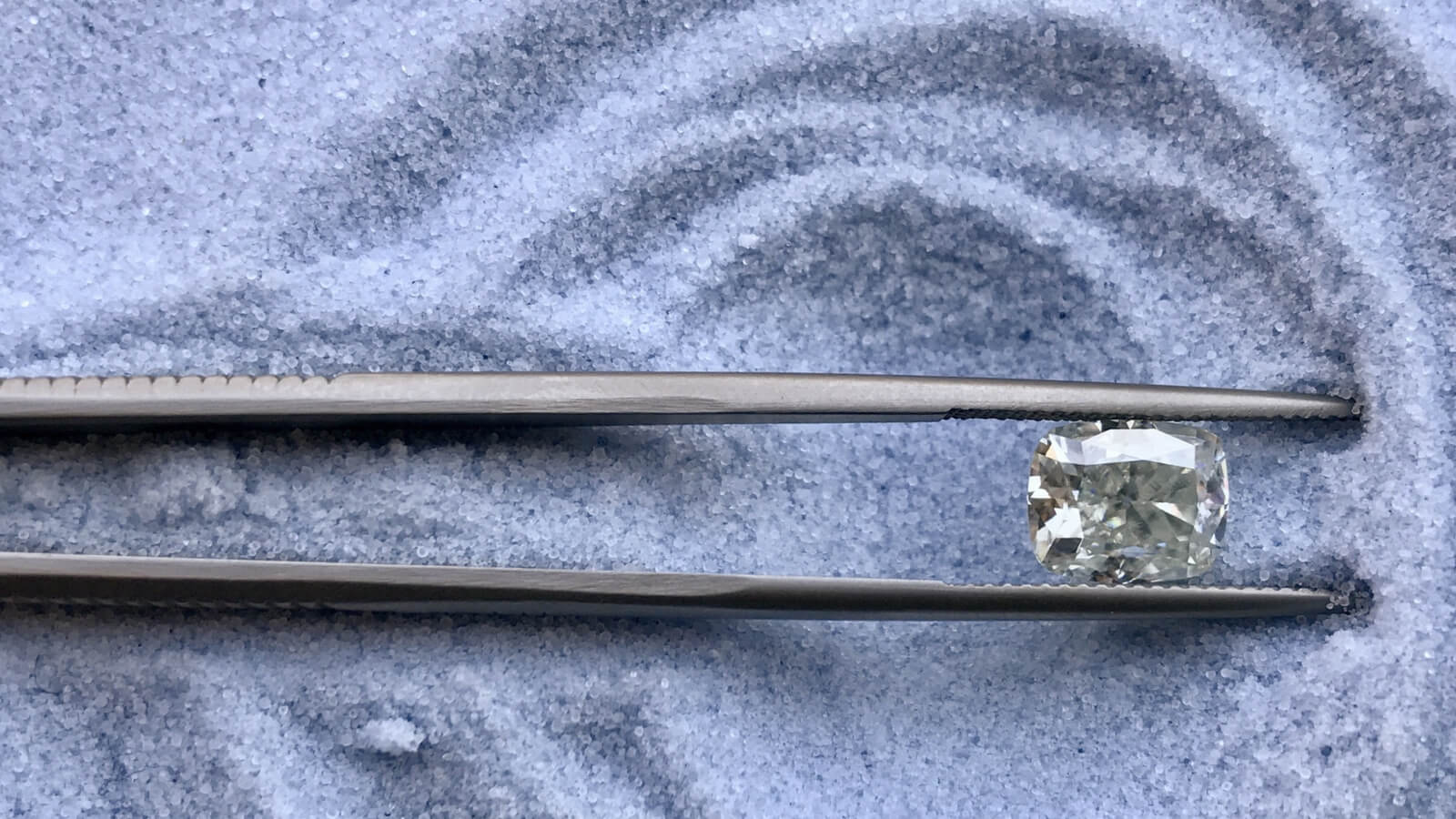Last month, we posted an article about the different kinds of synthetic diamonds and diamond substitutes available on the market. Many of these are indistinguishable from natural diamonds to the untrained eye.
Moissanite is a synthetic diamond, and is one of those diamond substitutes. We’re going to go into detail about this mineral and why you may or may not want to consider it for your next jewelry purchase.
Moissanite Vs. Natural Diamonds
Moissanite's chemical name is silicon carbide. It is a naturally-occurring mineral, but it is extremely rare in nature. Its discovery in the late 19th century came from the remains of meteorites. Scientists learned how to synthesize tiny crystals which are now used in many industrial applications. You might have a carbide drill bit or carbide sandpaper at home. That’s this mineral in action.
The mineral has many of the same qualities as natural diamonds. It is mostly colorless though you may need a loupe and a comparison diamond to notice the color. It can also have green or yellow tints.
Moissanite is not quite as hard as diamond, but just barely. It can also be cut into many different shapes used in jewelry, though it does have its own cutting techniques and refractive qualities that bring out its unique fire and brilliance.
Finally, it also weighs about 15% less than natural diamonds. Comparison between a cut diamond and a cut moissanite gem has to be done with millimeters as the closest approximation to carat weight.
In short, moissanite isn’t a fake or synthetic diamond. It is a unique mineral that must be taken on its own merits as a substitute for diamond.
Pros of Moissanite
There are two main reasons why people want to buy moissanite jewelry. The first is cost. You can get a much larger stone for a much cheaper price using moissanite. Moissanite gems can be 2-4x cheaper than the equivalent size of a natural diamond. However, if you are seeking ultimate colorlessness or particular cuts they may be impossible to achieve with moissanite.
The second reason is social responsibility. There are many consumers who have concerns about the history of the diamond trade and whether or not the funds from the purchase of raw diamonds are going to countries with poor human rights policies or who use the funds to go to war. Jewelers struggle with this problem too because they have no control over where diamond deposits are found or how the money is spent.
Responsible jewelers can track the provenance of their stones, so customers can make informed choices, but customers who do not want any involvement with this problem have turned to moissanite as a substitute mineral that gets them the beauty of something close to diamond while remaining socially responsible.
Drawbacks of Moissanite
As a stone of wealth, diamond’s higher price on the market means that it will retain more value should the piece need to be resold. There are also people who insist on the tradition of diamonds for things like engagement or wedding rings. Purchase of a similar-looking material at a lower price point can lead to feelings that the giver is being “cheap”. Finally, for people who insist on minerals with the best cut, color, clarity, and carat weight, the best moissanite cannot compare to the best natural diamonds.
In the end, however, it all comes down to the taste of the customer. If you would like to experience moissanite’s unique qualities with your own eyes, we invite you to come to one of our three locations for a closer look. (Florence | Huntsville | Franklin)

